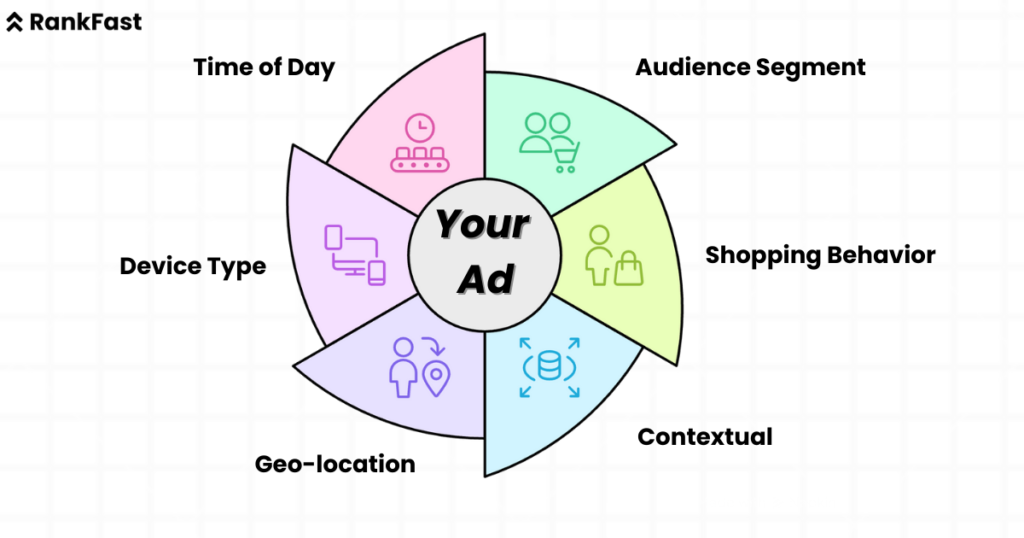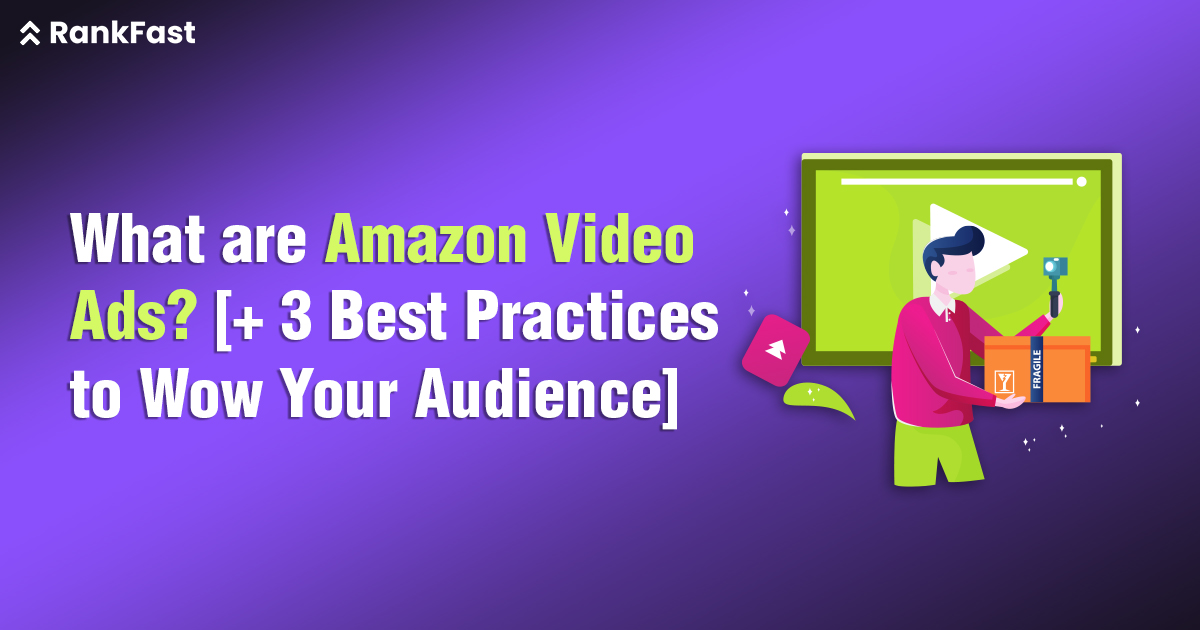Why do brands invest in ads that no one remembers? It’s not the budget. It’s how poorly the ad fits the platform. Many still reuse YouTube cuts or TV spots on Amazon, ignoring what viewers actually engage with. That’s a waste.
Amazon Prime Video ads reach 115 million monthly ad-supported viewers in the U.S., and their full TV offering hits 175 million households. This blog explains everything you need to get Amazon Prime Video ads right.
What Are Amazon Video Ads?
Amazon Prime Video ads are short promotional videos shown to viewers before, during, or after content on Amazon’s streaming services. These placements are not random. They are deeply targeted. Brands place their videos in front of highly specific audiences based on shopping behavior, interests, or past interactions.
What makes these ads different is the context. Viewers of Amazon Prime Video ads are not just watching for fun; they are often browsing or ready to buy. You’re not interrupting them. You’re reaching them at a decision-making moment.
These ads blend branding with shopping intent. A skincare brand, for example, can run an Amazon Prime Video ad before a beauty tutorial or skincare series. The ad doesn’t just get views. It influences actual buying.
For advertisers, this means better use of media dollars. You get attention from users already in the Amazon system. You’re not chasing views on random websites.
Types of Amazon Video Ads
There are three main types of Amazon Prime Video ads. Each one works best in different places for different goals.
1. In-Stream Video Ads
These run before, during, or after content. You often see them on Prime Video, Freevee, or Twitch. You can’t skip most of them. That gives brands a full 15–30 seconds of guaranteed exposure. These are perfect for storytelling, product showcases, or event promotions.
2. Out-Stream Video Ads
These run outside of video content. Think banners, product detail pages, or homepage carousels with auto-play. They grab attention silently and rely on captions or smart visuals. They work well for retargeting or highlighting product features.
3. OTT (Over-the-Top) Video Ads
These appear on smart TVs, Fire TV, or connected devices. They reach viewers on big screens. These are the premium options. Longer watch times lead to higher attention spans. Perfect for brand-building or seasonal campaigns.
Knowing the type matters. The Amazon ad video specs vary across types, resolution, length, captions, and format. If you skip those specs, your video might get rejected.
Match your campaign goal to the ad type. Brand awareness? Go OTT. Direct response? Use out-stream with product links. Product launch? In-stream works best.
Where Amazon Video Ads Appear
You can’t succeed with Amazon Prime Video ads unless you understand where they appear. Placement affects engagement. It also shapes your message.
Prime Video
Your ad can appear before a movie or episode. The user can’t skip it. You have full attention for a few seconds. It’s a good time for emotional appeal or storytelling.
Free
This ad-supported service reaches budget-conscious viewers. The content is free, and users expect ads. It’s great for product demos or discounts. Use this space for quick, punchy messages.
Twitch
Ideal for younger, gaming-heavy audiences. If your brand connects with that space, this works. Think of fast cuts, humor, or user-generated-style ads.
Fire TV
Viewers sit back and stream shows. Ads appear in content streams or even on the home screen. You’re working with big screens here, use clear text and bold colors.
Amazon DSP
If you want to go outside Amazon properties, DSP extends your video ads to other sites. It includes pre-roll, mid-roll, and other programmatic video slots.
Where your Amazon Prime Video ad runs will decide its format, length, and message tone. Don’t repurpose the same video for all. That’s lazy. And it doesn’t work.
Benefits of Using Amazon Video Ads for Your Brand
There’s a reason Amazon Prime Video ads are growing. The platform now airs 4–6 minutes of ads per hour, up from the earlier 2–3.5 minutes. That reflects higher demand and more inventory to fill. So what’s in it for brands?
1. High Intent Audience
Users watching content on Amazon are closer to purchase. Unlike social platforms, these viewers already shop on Amazon. The bridge between ad view and product page is short.
2. Detailed Targeting
Amazon has rich shopper data. Your ads can be targeted by category, purchase history, age group, Prime status, and even household composition.
3. First-Party Data
You’re not guessing here. You target based on actual behavior, not just cookies or interests.
4. Seamless Shopping Experience
Viewers can go from watching your Amazon Prime Video ad to clicking “Add to Cart” in seconds. The platform supports this flow.
5. Multi-Device Reach
Reach users across mobile, desktop, and connected TV. Your message stays consistent, regardless of screen.
The real benefit? Better ROI. When executed right, Amazon Prime Video ads perform better than traditional video ads. They cost more per impression, but they return more in conversions.
How to Set Up Amazon Video Ads
Getting started takes a few steps. Follow this sequence:
- Create an Amazon DSP account
You can’t run video ads through the self-service Seller Central panel. DSP access is needed. If you don’t have it, work with an agency partner. - Choose your goal
Brand awareness or conversions? Pick before creating the ad. This shapes the creative and targeting. - Build your ad asset
Follow the Amazon ad video specs strictly:
- File format: .mp4 or .mov
- Length: 15–30 seconds for in-stream
- Resolution: At least 1920 x 1080
- Aspect ratio: 16:9
- Captions: Required for mobile auto-play
- Bitrate: Minimum 2 Mbps
- File format: .mp4 or .mov
- Add branding
Include logo, product name, and CTA within the first 5 seconds. Viewers drop fast. - Set your targeting
Choose audiences based on past shopping data, behavior, or lookalikes. - Launch and monitor
Once approved, monitor impressions, CTR, and view-through rates weekly.
Avoid guesswork. Follow the Amazon ad video specs exactly. Test different creatives for different placements.
Targeting Options for Amazon Video Ads
Amazon gives you more control over who sees your video than almost any other platform.
You can target by:

- Audience segment: Pet owners, sports lovers, eco-friendly buyers
- Shopping behavior: Viewed similar products, purchased X category
- Contextual: Based on what the viewer is watching now
- Geo-location: Target by state, city, or even zip
- Device type: Mobile, tablet, Fire TV, desktop
- Time of day: Run ads when buyers convert better
Use layering. For example, target “Parents with kids under 10” + “Organic product buyers” + “Streaming on Fire TV after 8 PM.” That’s how you get precision.
Measuring the Performance of Amazon Video Ads
You can’t improve what you don’t track. Measure performance across three key layers:
- Viewability: Was your ad seen, or skipped? Look at completed view rates.
- Click-through Rate (CTR): How many viewers clicked to learn more.
- Conversion Attribution: Did they buy after watching?
Also track:
- Brand lift surveys
- Search uplift on Amazon post-view
- Video engagement time
If your Amazon Prime Video ad has high views but low clicks, change your CTA. If it gets skipped early, change your first 3 seconds. Never guess, test.
3 Best Practices to Wow Your Audience with Amazon Video Ads
- Start strong
Hook the viewer in the first 3 seconds. Ask a question, show a problem, or flash a bold stat. - Use captions always
Viewers mute videos. Always add clear captions. Even on TV, captions help comprehension. - Match message to audience intent
If targeting Prime shoppers, use convenience. If it’s Freevee users, lead with price or offer.
Also:
- Follow Amazon ad video specs strictly
- Test short vs. medium-length creatives
- Use vertical format for mobile, horizontal for TV
Common Mistakes to Avoid
- Ignoring Amazon ad video specs
- Using YouTube-style flashy intros
- Skipping captions
- Making videos too long
- No clear CTA
- Generic message for all audiences
- Poor visuals for Fire TV viewers
One ad doesn’t fit all. Customize based on device, placement, and audience.
Amazon Video Ads vs. Sponsored Display & Search Ads
| Feature | Video Ads (Prime) | Sponsored Display/Search |
| Format | Video | Image/Text |
| Placement | Streaming content | Search results, product pages |
| Audience Targeting | First-party + context | Search terms, views |
| Visual Impact | High | Medium |
| Ideal Use | Brand awareness | Conversion, retargeting |
| Setup Method | DSP only | Seller Central |
| CTR | Lower but stronger recall | Higher but lower brand recall |
Use Amazon Prime Video ads for impact and pair them with Sponsored Ads for conversions.
Final Thoughts
Amazon Prime Video ads demand a serious strategy. It’s not random editing, not guesswork. When you follow platform rules, structure your message, and match the specs, your video doesn’t just run, it works. Now that ad inventory is growing, the chance is here.
Want to launch smart and sharp? At Rankfast, we build and manage Amazon Prime Video ad campaigns that convert.
FAQs
1. What is the ideal length for Amazon Prime Video ads?
The best length is 15–30 seconds. Keep it short, clear, and direct. Longer videos often get skipped or lose attention midway.
2. Can small brands use Amazon Prime Video ads?
Yes. Even small brands can access video ad options through agencies or Amazon DSP partners, and budgets can be flexible.
3. Are captions required in Amazon Prime Video ads?
Yes. Captions are essential. They improve performance, especially on mobile and muted auto-play environments.
4. Where do these video ads run on Amazon?
They run on Prime Video, Freevee, Fire TV, Twitch, and Amazon’s extended DSP network. Placement depends on targeting settings.
5. Do Amazon ad video specs change often?
Not frequently, but always check before uploading. Specs include file size, resolution, format, bitrate, and caption rules. Follow exactly.

Leave a Reply